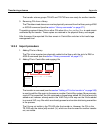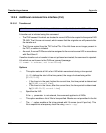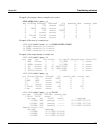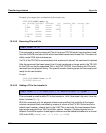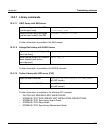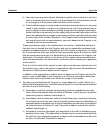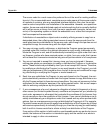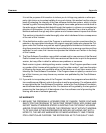
U41117-J-Z125-7-76 569
Appendix Transferring volumes
If the VLM does not know the LV, no restore command is issued to the PLM for the purpose
of actually reading in the LV. The PLM therefore waits for an unlimited time, and no progress
can be recognized when you query the jobs (plmif query -j -G TR-PVG).
You can then either create this LV in the LVG, or skip this LV using the transfer-in cancel
command (see the section “Skipping an LV / removing a PV” on page 570).
Options
-V The -V option enables a list of PVs to be entered directly; blanks are not permitted
here.
-f The -f option specifies the file which contains the PV names, one name in each
line. Thes are copied to the VLP using rcp.
Example of the start of a transfer-in
AZUR-VLP0# plmif trans -i -V 000348 -t 3580
PV 000348 prepared for transfer-in.
Example of the output when starting a transfer-in
AZUR-VLP0# plmif query -j -G TR-PVG
dumping worklist:
pos name type PDS PV priority(dyn. - static) timestamp
1 ====== RINIT PDSI 000348 0 - 0 21.11.2002
15:16:24
no entry in waitqueue
Example of the output during a transfer-in
AZUR-VLP0# plmif query -j -G TR-PVG
dumping worklist:
pos name type PDS PV priority(dyn. - static) timestamp
1 EXIM00 REST PDSI 000348 1000 - 1000 21.11.2002
15:17:13
no entry in waitqueue
As with reorganization, the PLM uses a Move command to have the LVs read into the TVC
from the transfer PVs and then have them stored again on the relevant PVs of the normal
PVG in accordance with the normal affiliation of the LVs to the LVG.
A special option (-r) in the internal Move command (from the PLM to the VLM) is used to
guarantee that a restore always takes place from the TR-PVG to the TVC, also if a (newer)
LV still exists in the TVC. This ensures that the data of an LV which may have been modified
during the export is overwritten by the (older or newer) LV in the system.






